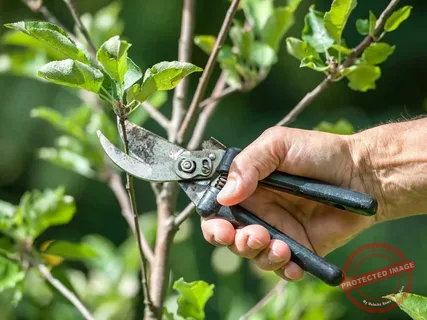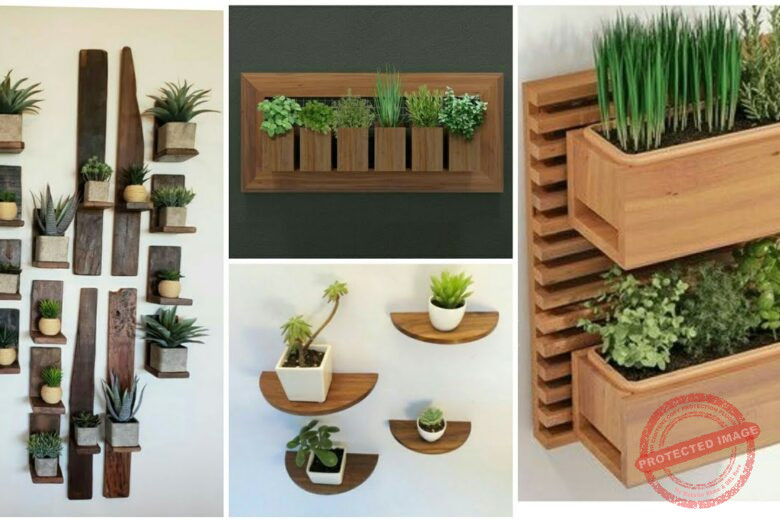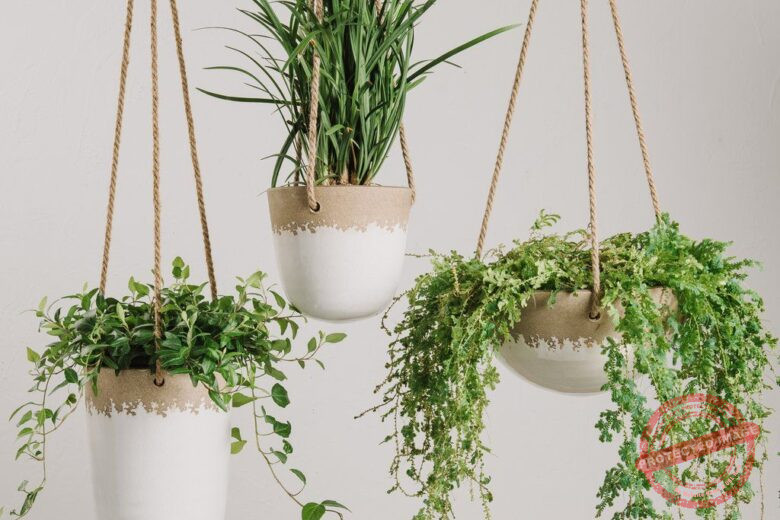Growing vegetables indoors is a rewarding and efficient way to enjoy fresh produce right at your fingertips. In this comprehensive guide, we’ll delve into the 30 fastest vegetables you can successfully grow indoors. Whether you’re a seasoned horticulturist or a newbie with a green thumb, these veggies are sure to flourish within the cozy confines of your home.
Indoor vegetable gardening is a fantastic way to bring the joy of gardening into your home, regardless of space limitations. With a little bit of knowledge and dedication, you can cultivate a wide variety of vegetables right on your windowsill or under grow lights. In this article, we’ll explore the myriad benefits of indoor vegetable gardening, the essential requirements you need to meet, and a diverse selection of the 30 fastest vegetables that thrive indoors.
30 Fastest Vegetables To Grow Indoors

Now, let’s explore the exciting array of vegetables that you can cultivate indoors. These vegetables have relatively short growth cycles and are perfect for beginners looking to see quick results.
1. Microgreens
Microgreens are young, tender plants that are harvested when they’re only a few inches tall. They’re packed with nutrients and can be grown in shallow containers on your windowsill.
Read Also: [Beginner’s Guide] How to Start a Fish Farming in Arkansas
2. Spinach
Spinach is a nutrient-rich leafy green that grows well indoors. It’s versatile and can be used in salads, smoothies, and cooked dishes.
3. Radishes
Radishes are known for their rapid growth and peppery flavor. They can be ready for harvest in as little as 25 days.
4. Scallions
Scallions, also known as green onions, are easy to grow indoors. You can snip off the green tops as needed for a mild onion flavor.
Read Also: [Beginner’s Guide] How To Grow Butternut In Kenya
5. Lettuce
Lettuce varieties like loose-leaf and butterhead are well-suited for indoor cultivation. They mature quickly and provide fresh, crisp leaves for salads.
6. Kale
Kale is a nutritional powerhouse that thrives in indoor settings. Its leaves can be harvested over an extended period.
7. Arugula
Arugula has a peppery taste and grows swiftly indoors. It’s a great addition to salads and sandwiches.
Read Also: [Beginner’s Guide] How To Grow Vegetable Indoors With Light
8. Bok Choy
Bok choy is a type of Chinese cabbage with tender stems and leaves. It can be grown indoors for a steady supply of nutritious greens.
9. Swiss Chard
Swiss chard comes in vibrant colors and is rich in vitamins. It’s a great option for indoor gardening.
10. Basil
Basil is a fragrant herb that adds flavor to various dishes. It requires bright light and well-draining soil.
Read Also: 20 Easiest Herbs To Grow Indoors [Beginner’s Guide]
11. Cilantro
Cilantro, also known as coriander, is a versatile herb used in many cuisines. It grows quickly and can be harvested frequently.
12. Mint
Mint is a hardy herb that thrives indoors. It’s perfect for garnishing drinks and desserts.
13. Thyme
Thyme is a low-maintenance herb with a delightful aroma. It can be used in cooking and for making herbal teas.
Read Also: 25 Best Indoor Vegetable Garden System
14. Oregano
Oregano is a flavorful herb that grows well indoors. Its leaves can be dried for future use.
15. Parsley
Parsley adds freshness to dishes and can be grown indoors in pots or containers.
16. Carrots
Certain varieties of carrots are suitable for indoor cultivation. Choose shorter varieties and provide well-draining soil.
Read Also: [Beginners Guide] How To Grow Butternut Squash Vertically
17. Beets
Beets can be grown indoors for their tender greens. Harvest the leaves for salads and the roots for cooking.
18. Turnips
Turnips are fast-growing root vegetables that can be enjoyed both for their greens and roots.
19. Green Onions
Green onions are easy to grow indoors and add a mild onion flavor to various dishes.
20. Peppers
Compact pepper varieties, like chili peppers, can thrive indoors. They require ample light and warmth.
21. Cherry Tomatoes
Dwarf cherry tomato plants can be grown indoors. Enjoy the sweetness of homegrown tomatoes.
22. Bush Beans
Bush bean varieties can be cultivated indoors for their edible pods. Provide support for the plants as they grow.
23. Peas
Peas can be grown indoors with trellis support. Harvest the tender pods for snacking or cooking.
24. Zucchini
Dwarf zucchini varieties can be grown in larger containers indoors. Enjoy fresh zucchini without the need for a sprawling garden.
25. Cucumbers
Dwarf cucumber plants can be grown vertically indoors. Harvest crisp cucumbers for salads and pickles.
26. Eggplants
Dwarf eggplant varieties can thrive indoors with proper care. Enjoy homegrown eggplants for various dishes.
27. Mushrooms
Mushrooms can be grown indoors in controlled environments. Kits are available for cultivating various mushroom species.
28. Onions
Onions can be started indoors from sets or seeds. They require a longer growth period but are rewarding to grow.
29. Garlic
Garlic can be grown indoors from individual cloves. It requires a period of cold temperature to develop bulbs.
30. Ginger
Ginger can be grown indoors in pots. Plant ginger rhizomes and enjoy fresh ginger for culinary use.
Benefits of Indoor Vegetable Gardening
Indoor gardening offers numerous advantages for plant enthusiasts. It allows you to extend the growing season, provides a convenient source of fresh produce, and offers a creative outlet for nurturing plants.
Furthermore, indoor gardening enables you to exercise control over environmental conditions, reducing the risk of pests and diseases. Whether you’re a city dweller with limited outdoor space or simply looking to add a touch of greenery to your living space, indoor vegetable gardening is an excellent option.
Essential Requirements for Indoor Vegetable Gardening
Before you embark on your indoor gardening journey, it’s important to create an optimal environment for your plants to thrive. Here are the key elements you need to consider:
Light
Proper lighting is paramount for the success of indoor vegetable gardening. Most vegetables require at least 6-8 hours of sunlight per day. If natural sunlight is limited, you can supplement it with full-spectrum grow lights. Position your plants near a south-facing window or adjust the height of the grow lights to ensure consistent light exposure.
Soil
Choosing the right soil mix is crucial for healthy plant growth. Opt for a well-draining potting mix enriched with organic matter. Avoid using garden soil, as it may contain pests and diseases that can harm your indoor plants.
Containers
Selecting the appropriate containers is essential to accommodate the root systems of your vegetables. Ensure that your pots have drainage holes to prevent waterlogged soil. Consider the mature size of the plants when choosing container sizes.
Watering
Maintaining proper moisture levels is vital. Be attentive to your plants’ water needs, and water thoroughly when the top inch of soil feels dry. Use a saucer under the pots to catch excess water and prevent root rot.
Now that we’ve covered the essential requirements for successful indoor vegetable gardening, let’s delve into the exciting world of vegetable choices.
Choosing the Right Vegetables for Indoor Cultivation
When selecting vegetables for indoor cultivation, it’s important to choose varieties that are well-suited for the limited space and conditions of indoor environments. Here are four categories of vegetables that thrive indoors:
Leafy Greens
Leafy greens, such as lettuce, spinach, kale, and arugula, are excellent choices for indoor gardening. They have shallow root systems and can be harvested continuously for fresh salads.
Herbs
Herbs like basil, mint, thyme, and parsley are aromatic and flavorful additions to any indoor garden. They require moderate light and can be grown in small pots.
Root Vegetables
Certain root vegetables, including radishes, carrots, and turnips, can be grown indoors successfully. Choose compact or dwarf varieties for optimal results.
Dwarf Varieties
Many vegetables have dwarf or compact varieties that are well-suited for indoor gardening. Look for compact versions of tomatoes, peppers, beans, and more.
Planting and Caring for Indoor Vegetables
Now that you’ve selected the vegetables you want to grow indoors, it’s time to get your hands dirty. Follow these steps for successful planting and care:
Seed Starting
For most vegetables, start seeds in seedling trays filled with a well-draining potting mix. Plant seeds at the recommended depth and provide the appropriate amount of water.
Transplanting
Once seedlings have grown a few sets of leaves, they’re ready for transplanting. Gently remove seedlings from the trays and transplant them into larger containers filled with potting mix.
Watering and Fertilizing
Water your plants thoroughly but avoid overwatering, as this can lead to root rot. Use a balanced liquid fertilizer to provide nutrients as the plants grow.
Pest Control
Monitor your plants for pests like aphids, mealybugs, and spider mites. Remove pests by gently wiping leaves with a damp cloth or using insecticidal soap.
Harvesting
Harvest leafy greens when they reach a suitable size. For root vegetables, gently pull them from the soil. Regular harvesting encourages continuous growth.
Troubleshooting Common Issues in Indoor Vegetable Gardening
As you embark on your indoor gardening journey, you may encounter a few challenges. Here are some common issues and how to address them:
Leggy Seedlings
If your seedlings become tall and spindly, it’s a sign that they’re not receiving enough light. Move them to a brighter location or provide supplemental light.
Yellowing Leaves
Yellowing leaves can indicate nutrient deficiencies or overwatering. Adjust your watering routine and consider using a balanced fertilizer.
Overwatering
Overwatering can lead to root rot and mold growth. Allow the top inch of soil to dry out before watering again.
Underwatering
Underwatering can cause plants to wilt and their leaves to become droopy. Water your plants thoroughly when the top inch of soil is dry to the touch.
Pests and Diseases
Keep an eye out for pests and diseases, and address them promptly. Remove affected leaves and use organic pest control methods if necessary.
What is the Quickest Vegetable to Grow?
When it comes to speedily enjoying the fruits of your gardening labor, microgreens take the lead. These tiny, nutrient-packed greens are ready for harvest in just 1 to 3 weeks after sowing. Their rapid growth makes them an ideal choice for those looking for quick results.
Which is the Easiest Vegetable to Grow at Home?
For beginners or anyone with limited gardening experience, radishes are often considered one of the easiest vegetables to grow at home. They’re forgiving plants that mature in as little as 3 to 4 weeks. Radishes thrive in various conditions, making them a great confidence-booster for new gardeners.
What Fruit or Vegetable Takes the Shortest Time to Grow?
When you’re seeking near-instant gratification in the world of gardening, look no further than sprouts. Sprouts, such as mung bean or alfalfa sprouts, can be ready to eat in just a few days. These nutrient-dense mini-vegetables are packed with flavor and can be grown indoors on your kitchen counter, providing a quick and easy way to enjoy homegrown goodness.
Can I grow vegetables indoors without natural sunlight?
Yes, you can use full-spectrum grow lights to provide the necessary light for indoor vegetable growth.
How often should I water my indoor vegetables?
Water your indoor vegetables when the top inch of soil feels dry to the touch. Avoid overwatering to prevent root rot.
Can I grow large vegetables like zucchini and eggplants indoors?
Yes, there are dwarf varieties of zucchini and eggplants that are suitable for indoor cultivation.
Do indoor vegetables require any special care for pest control?
Yes, monitor your plants for pests regularly and use methods like wiping leaves with a damp cloth or using insecticidal soap to control pests.
Can I reuse potting mix for indoor vegetables?
It’s recommended to refresh or replace the potting mix after each growing season to ensure healthy plant growth.
Conclusion
Embarking on an indoor vegetable gardening journey can be a fulfilling and rewarding experience. With the right knowledge, preparation, and care, you can enjoy a bountiful harvest of fresh, homegrown vegetables right from the comfort of your home. Whether you’re a beginner or an experienced gardener, the 30 fastest vegetables mentioned in this article provide an array of options to suit your preferences and gardening space.




3 Replies to “30 Fastest Vegetables To Grow Indoors”